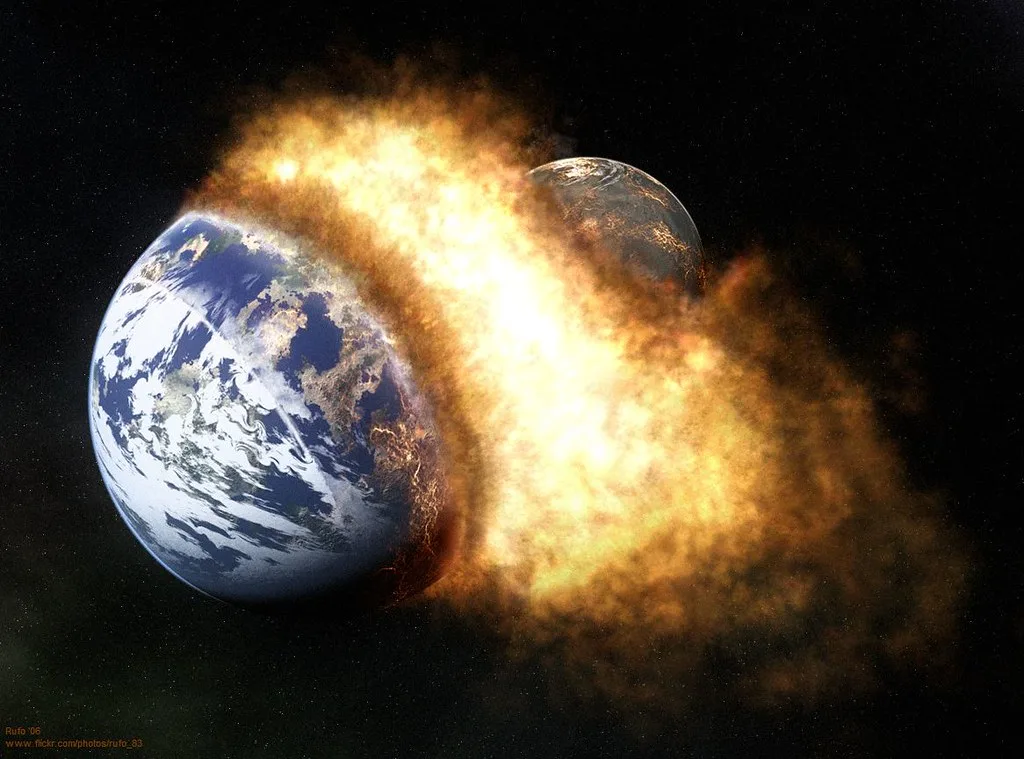Table of Contents
The lost planet Theia is hidden inside Earth.
Theia
Scientists have unearthed strange stuff deep within the Earth that appears to be the remnants of an ancient planet that collided with Earth billions of years ago.
Large low-velocity provinces (LLVPs) are blobs of odd material that were initially identified in the 1980s by geophysicists, who were unsure of what they were at the time. Each blob, which is twice the size of the moon and is located beneath both Africa and the Pacific Ocean, is composed of several components.
Scientists have now figured out the puzzle. In reality, these blobs are the remnants of an extinct planet that collided with Earth in the same collision that formed the moon. A research detailing the results was published on November 1 in the scientific journal Nature.

However, these recent discoveries imply that it might have been taken up by Earth. This is what would have produced the odd blobs found beneath the Pacific and African continents.
Qian Yuan, the research leader and O.K. Earl Postdoctoral Scholar Research Associate, got the notion to look into this after attending a planet formation seminar in 2019 that was led by Arizona State University professor Mikhail Zolotov.
“I had a ‘eureka moment’ and realized that the iron-rich impactor could have transformed into mantle blobs right after Mikhail had said that no one knows where the impactor is now,” Yuan said in a release outlining the study’s conclusions.
By measuring seismic waves, the LLVPs were initially found in the 1980s. Researchers found that there was a distinct pattern in the Earth’s deepest mantle. The two structures that were found to have a high iron content were indicated by the seismic waves. The waves slowed down because of the high iron content.
Yuan developed a number of theories about what happened to Theia and how it affected Earth during his studies.

They came to the conclusion that there was a good chance that this collision caused the moon and the blobs to develop. It’s also possible that the mantle of Theia was absorbed by the mantle of Earth, where it crystallized and eventually took the form of the blobs.
The research’s coauthor, Paul Asimow, the Eleanor and John R. McMillan Professor of Geology and Geochemistry, stated in a release that “the idea that the LLVPs are remnants of Theia is that they are very ancient.”
“It makes sense, therefore, to investigate next what consequences they had for Earth’s earliest evolution, such as the onset of subduction before conditions were suitable for modern-style plate tectonics, the formation of the first continents, and the origin of the very oldest surviving terrestrial minerals,” Asimow stated.
you may also like : The Great Sphinx of Egypt’s unexpected origin has been found 2024
Lost Planet Theia Is Hidden Inside the Earth, New Study Says (msn.com)
By measuring seismic waves, the LLVPs were initially found in the 1980s. Researchers found that there was a distinct pattern in the Earth’s deepest mantle. The two structures that were found to have a high iron content were indicated by the seismic waves. The waves slowed down because of the high iron content.
Yuan developed a number of theories about what happened to Theia and how it affected Earth during his studies.
By measuring seismic waves, the LLVPs were initially found in the 1980s. Researchers found that there was a distinct pattern in the Earth’s deepest mantle. The two structures that were found to have a high iron content were indicated by the seismic waves. The waves slowed down because of the high iron content.
Yuan developed a number of theories about what happened to Theia and how it affected Earth during his studies.


1 thought on “According to a recent study, the lost planet Theia is hidden inside Earth 2024.”